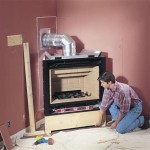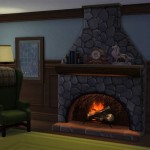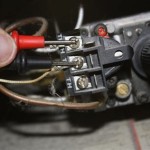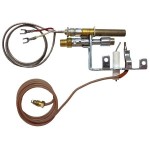Indoor Tabletop Fireplaces: A Guide to Ambiance and Safety
Indoor tabletop fireplaces offer a compelling blend of aesthetic appeal and functional warmth, providing a captivating focal point for any interior space. These self-contained units are designed to be portable and easy to use, offering a convenient way to create a cozy ambiance without the complexities and potential hazards associated with traditional fireplaces. This article will delve into the various aspects of indoor tabletop fireplaces, exploring their functionality, safety considerations, fuel types, and aesthetic variety.
Unlike their full-sized counterparts, tabletop fireplaces are intended to provide supplemental heat and visual interest rather than serve as a primary heating source. Their compact size and ease of placement make them suitable for apartments, condominiums, and homes where installing a conventional fireplace is impractical or impossible. They are available in a multitude of designs, ranging from minimalist modern styles to rustic and traditional aesthetics, allowing consumers to select a model that complements their existing decor.
Understanding the Functionality of Tabletop Fireplaces
Tabletop fireplaces operate on a simple principle: the combustion of a liquid fuel within a contained vessel. The most common fuel types are isopropyl alcohol (rubbing alcohol) and bio-ethanol, although certain models may be designed for use with gel fuel. The fuel is poured into a burner chamber, typically made of stainless steel, and then ignited with a long-handled lighter or match. The flames produced by the burning fuel provide both warmth and a visual display. The heat output is generally limited due to the small size of the burner chamber and the burning fuel quantity; however, it is sufficient to provide a noticeable warming effect in a small area, such as a tabletop or an outdoor patio.
Many tabletop fireplaces incorporate a snuffer or extinguishing tool, which is used to safely smother the flame when desired. This tool typically consists of a metal plate or lid that deprives the flame of oxygen, effectively extinguishing it. Some models also feature adjustable flame controls, allowing the user to regulate the intensity and size of the flame. This feature can be particularly useful for controlling the heat output and conserving fuel.
The materials used in the construction of a tabletop fireplace contribute to its overall functionality and aesthetic appeal. Common materials include stainless steel, glass, stone, and ceramic. Stainless steel is often used for the burner chamber due to its durability and resistance to corrosion. Glass enclosures are frequently incorporated to provide a clear view of the flames and to act as a protective barrier. Stone and ceramic bases offer stability and contribute to the overall visual design.
Prioritizing Safety When Using Indoor Tabletop Fireplaces
Safety is paramount when operating any type of open flame appliance, and indoor tabletop fireplaces are no exception. While they are generally considered safe when used properly, it is crucial to adhere to certain precautions to prevent accidents and ensure safe operation. The most important safety considerations are proper ventilation, responsible fuel handling, and careful supervision.
Adequate ventilation is essential to prevent the buildup of carbon monoxide, a colorless and odorless gas that can be produced by the incomplete combustion of fuel. While tabletop fireplaces produce relatively small amounts of carbon monoxide compared to traditional fireplaces, it is still important to ensure that the room is well-ventilated. This can be achieved by opening windows or doors to allow fresh air to circulate. Carbon monoxide detectors are highly recommended in homes where any type of fuel-burning appliance is used.
Fuel handling requires careful attention to avoid spills and potential fire hazards. It is crucial to use only the type of fuel recommended by the manufacturer and to store fuel in a safe location, away from heat sources and open flame. When refueling the fireplace, ensure that the flame is completely extinguished and that the burner chamber has cooled down before adding more fuel. Never overfill the burner chamber, as this can lead to fuel spills and uncontrolled flames. A funnel can be helpful in preventing spills during refueling.
Continuous supervision is necessary when the fireplace is in operation. Never leave a burning fireplace unattended, especially in the presence of children or pets. Keep flammable materials, such as curtains, paper, and furniture, away from the flames. If a fire occurs, use a fire extinguisher rated for Class B fires (flammable liquids) to extinguish the flames. It is important to familiarize oneself with the operation of a fire extinguisher before using a tabletop fireplace.
Exploring Fuel Options and Their Characteristics
The selection of fuel for a tabletop fireplace is a critical factor in determining its performance, safety, and environmental impact. The most common fuel options are isopropyl alcohol (rubbing alcohol) and bio-ethanol, each with its own set of advantages and disadvantages.
Isopropyl alcohol, commonly available in concentrations ranging from 70% to 99%, is a readily accessible and relatively inexpensive fuel option. Higher concentrations of isopropyl alcohol produce a cleaner burn with less soot and odor. However, isopropyl alcohol is highly flammable and emits a strong odor during combustion, which some individuals may find unpleasant. It also produces a less vibrant flame compared to bio-ethanol.
Bio-ethanol is a renewable fuel derived from plant-based sources, such as corn and sugarcane. It is considered a more environmentally friendly option compared to fossil fuels. Bio-ethanol produces a cleaner burn with minimal soot and odor, and it generates a brighter and more visually appealing flame. However, bio-ethanol is generally more expensive than isopropyl alcohol. It is also important to ensure that the bio-ethanol is specifically designed for use in ventless fireplaces to avoid potential safety issues.
Gel fuel, consisting of flammable liquid thickened into a gel-like consistency, is another option for certain tabletop fireplace models. Gel fuel is typically packaged in individual cans, which are placed directly into the fireplace. Gel fuel produces a crackling sound similar to that of a wood-burning fire, adding to the ambiance. However, gel fuel can be more expensive than liquid fuels, and it may produce more soot and residue. It is also important to use only gel fuel specifically designed for tabletop fireplaces and to follow the manufacturer's instructions carefully.
Regardless of the fuel type chosen, it is imperative to use only fuels that are specifically designed for ventless fireplaces. Using other types of flammable liquids can be extremely dangerous and may result in explosions or uncontrolled fires. Always consult the manufacturer's instructions for recommended fuel types and safety precautions.
The choice of fuel also influences the burning time, heat output, and overall cost of operation. Bio-ethanol typically burns longer and produces more heat than isopropyl alcohol. However, bio-ethanol is also more expensive. Gel fuel cans typically burn for a shorter duration but may offer a more convenient and mess-free option.
The user should consider the availability, cost, and environmental impact of each fuel option when choosing the appropriate fuel for their needs. While isopropyl alcohol is the most readily available and affordable option, bio-ethanol offers a cleaner burn and a more aesthetically pleasing flame. Gel fuel provides a convenient and crackling fire experience but may be more expensive and produce more residue.
Tabletop fireplaces can greatly enhance the ambiance of any room. Careful consideration of safety protocols and fuel types is essential for responsible use and enjoyment of this product.

Stonhome Tabletop Fire Pit Bowl Marble Portable Fireplace Indoor Outdoor Mini Clean Flame For Patio Balcony Smores Maker

Rectangle Tabletop Bioethanol Fireplace Vonhaus

Tabletop Fire Pit Rectangular Indoor Or Outdoor Ventless Fireplace Clean Burning Portable Heat With 360 View By Northwest Black Target
Colsen Custom Tabletop Rubbing Fireplace Indoor Outdoor Fire Pit Portabl

Homcom Tabletop Fireplace 13 Concrete With Stainless Steel Lid For Indoor And Outdoor 0 04 Gal Max 195 Sq Ft Burns Up To 45 Minutes Dark Grey Aosom Com

Vonhaus Tabletop Fireplace Bioethanol Bio Ethanol Table Top Fire Heater For Outdoor Indoor Portable 70 Min Burn Time Windproof Glass Rectangle Shape Hammer Stone Grey

Tabletop Fireplace Upgrades Rectangle Bio Ethanol Indoor Outdoor Fire Pit Portable Bowl Pot In Black Realistic Burning 39 3 X10 X 10 Yahoo Ping

Atr Art To Real Upgrades Tabletop Fire Pits Portable Smokeless Bio Ethanol Fireplace With Realistic Burning Awesome Gifts Com

Vonhaus Bio Ethanol Tabletop Fireplace Bioethanol Fire Pit For Outdoor And Indoor Portable 60 Min Burn Time Windproof Glass Diy At B Q

Table Top Fire Pit Bowl Mini Personal Tabletop Fireplace Rubbing Indoor
Related Posts








